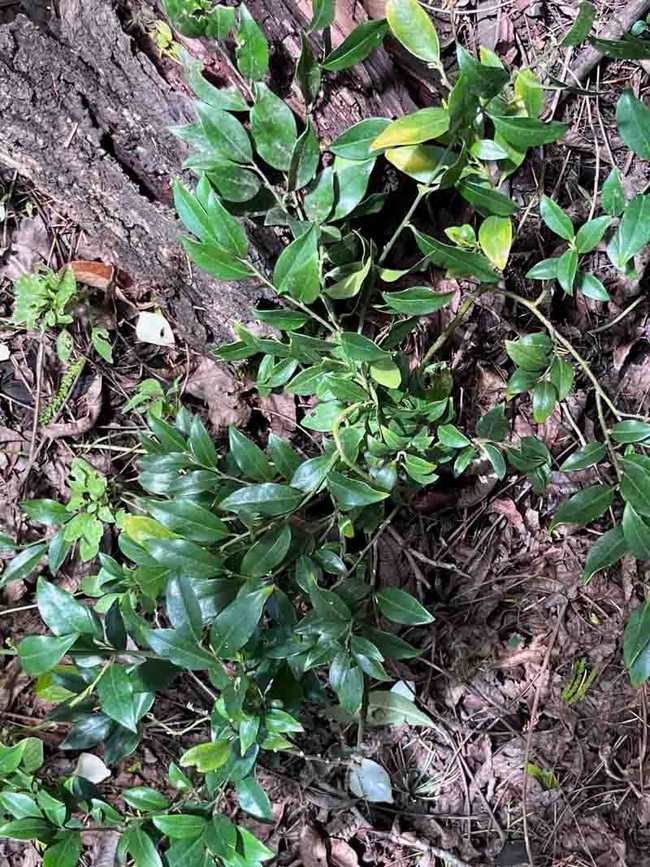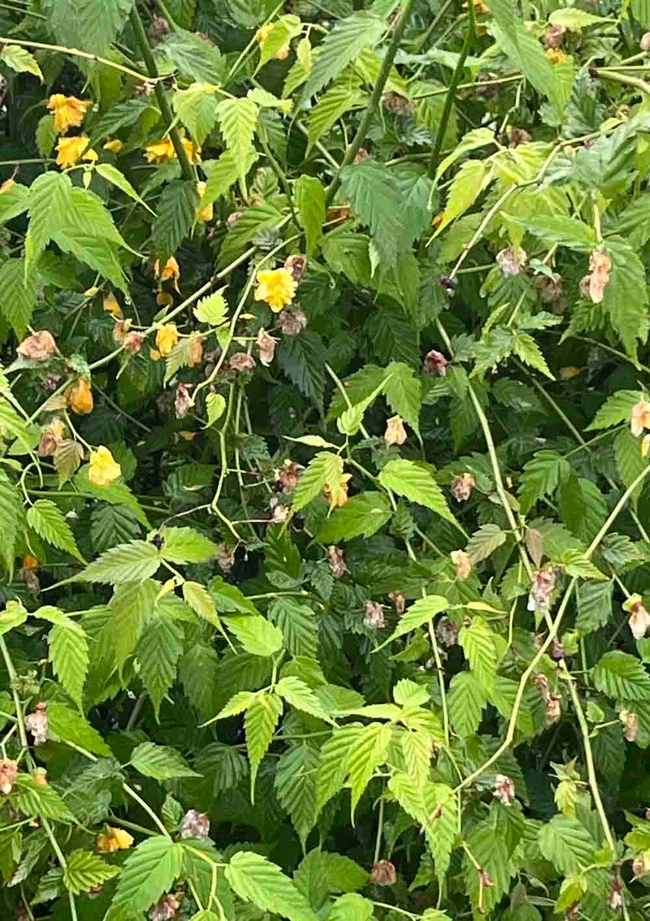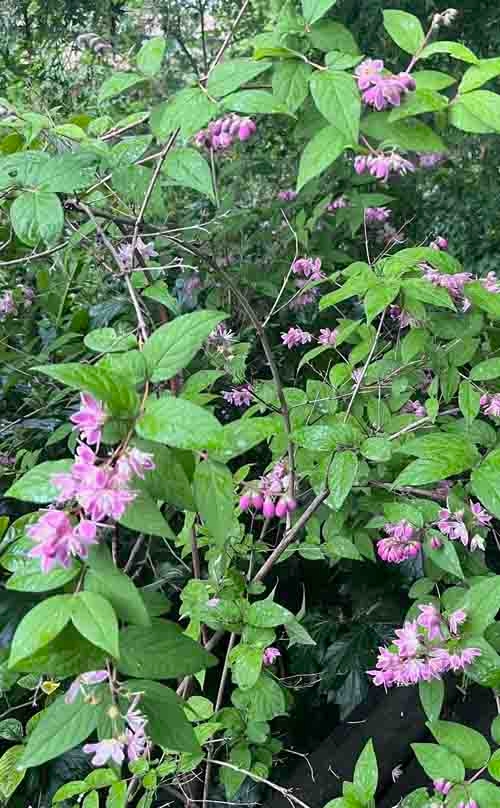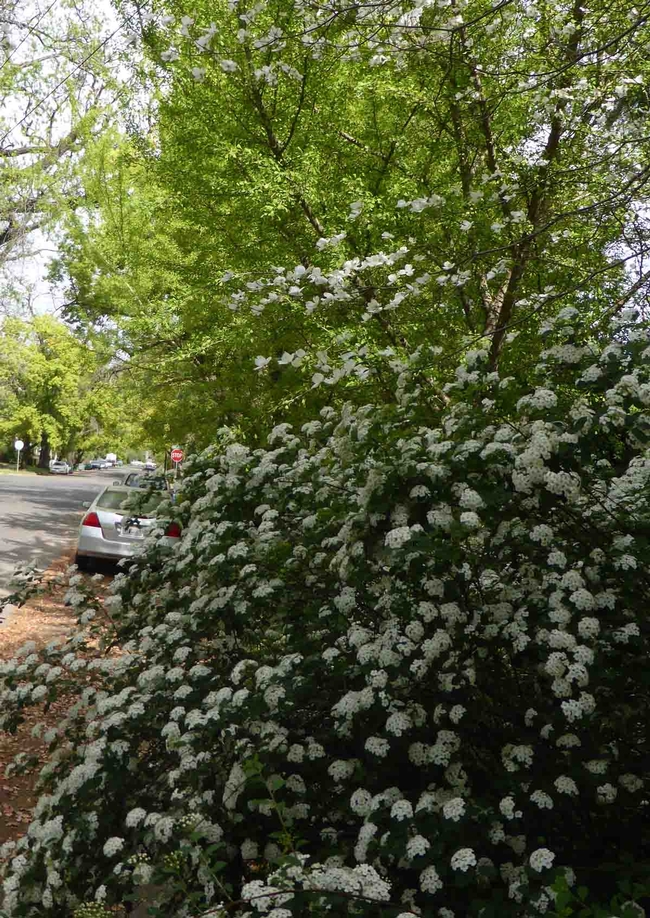Summers are getting hotter in much of the U.S., including our local environment. One way to counteract this change in climate is by planting trees to provide more shade in the summer months. But adjusting to a shadier garden also means shifting to different plant choices. While it is true that most colorful garden flowers (like roses, zinnias, poppies, and hollyhocks) require full sun, there are still many options for blooms available to the shade gardener. White flowered gardenias and pink or blue flowering hydrangeas are common shade plants in our area. Here are some less obvious selections of shrubs that are easy to care for and can provide interest in the shade garden at different times of the year:
The shiny green foliage of Sarcococca hookeriana makes an attractive ground cover throughout the year. J.C. Lawrence
At the end of its bloom, and right after a rainstorm, Kerria Japonica is still an attractive shrub. J.C. Lawrence
This pink-flowering Deutzia is a standout in a shady woodland garden. J.C. Lawrence
The genus Spiraea includes many species that do well in lightly shaded areas in our climate. There are two main types of Spiraea: those with long, graceful, arching branches lined with clusters of tiny white flowers (these are often referred to as the “bridal wreath type”); and those with a shrubby growth habit which produce clusters of white, pink or red blossoms at their branch ends. Both types are deciduous, and the leaves of many of these species turn bright shades of red, orange, or yellow in the fall.
Spiraea thunbergii is a bridal wreath type that can reach six feet high and wide, with many thin, arching branches. In early spring, the bare branches are lined with clusters of tiny white flowers. These are followed by very narrow, inch-and-a-half-long, blue-green leaves that turn yellow or reddish brown in the fall. Another stunning bridal wreath type is the fast-growing S. x vanhouttei. On this shrub, diamond-shaped blue-green leaves emerge first, followed by flat clusters of white blossoms covering the plant in mid to late spring.
A bridal wreath spirea covered in springtime blossoms, underneath a dogwood tree. J.C. Lawrence
By planting several different species of Spiraea, you can have blooming shrubs in shadier areas of the garden from early spring into summer, with the added bonus of beautiful fall-colored leaves, and often, brightly-colored bare stems in winter.
UC Master Gardeners of Butte County are part of the University of California Cooperative Extension (UCCE) system. To learn more about us and our upcoming events, and for help with gardening in our area visit our website. If you have a gardening question or problem, email the Hotline at mgbutte@ucanr.edu or leave a phone message on our Hotline at 530-552-5812. To speak to a Master Gardener about a gardening issue, or to drop by the MG office during Hotline hours, see the most current information on our Ask Us section of our website.



